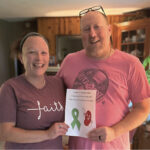Just as we look for Material Safety Data, or MSD, in our food, we should also be aware of what is contained in the various furnishings we bring into our homes.
We see products come into our market from all parts of the world. Now the big question is, “What is in those products?”
Most companies that make products in other countries are not regulated as those in our own country. We are accustomed to carefully defined regulation. Most domestic companies operate under strict licensing and controls.
We hear about recalls of food, children’s toys and other products, many from overseas. Recently, I learned of an American pet food that actually had been made in another country and almost caused a dog to get very sick. It’s not just how products are made, but what is in them.
When you purchase an item of furniture or undergo construction work – whether a new building or remodeling – consider reviewing the LEED standards.
LEED is a division of the U.S. Green Building Council that supports a national consensus to produce structures that deliver high performance inside and out. LEED develops industry standards and building and construction guidelines, and helps to develop public policy to support the adoption of sustainable-design building practices. LEED looks at how buildings are designed, constructed and maintained.
You may have noticed buildings being granted LEED accreditation. These buildings are evaluated and labeled – with platinum being the highest category. For example, wood would have documentation stating how it was grown, and on every process that took place, from the time the wood was harvested to the time it was delivered to your home or building. This ensures consumers have a healthy product.
Another organization is the Sustainable Furnishings Council, a nonprofit coalition of suppliers, manufacturers, retailers and interior designers. The Council focuses on low energy use, deforestation, indoor air quality, conservation, and toxic pollutants.
Next time you consider purchasing any product that will be part of your interior, request its Material Safety Data. Products often have offgassing – evaporation of toxic chemicals from materials that can release into the air for many years. It’s hard to believe offgassing can occur this long, but in many cases it does. The MSD will tell you if a product has toxic gases or other harmful effects. An example of a product that is safer than a more commonly used one is the silver in silverware. As opposed to stainless steel, silver doesn’t support germs.
Another issue is the definition of “green.” A manufacturer or retailer may call a product “green,” but what does that really mean? The term “green” is everywhere on products, but is it meaningful or is it just “green-washing” the product? Has it really been handled in a truly healthy manner? Is it truly safe for the environment? How does “green” differ from “sustainable” or “eco-friendly”?
Ask your interior designer or the professional working with you to supply you with the appropriate information, so you can be sure you are bringing only healthy items into your home.
Mary V. Knackstedt, FASID, FIIDA, of Harrisburg is founder and president of Knackstedt, Inc. She’s a designer with more than 30 years’ experience and a renowned business consultant, helping thousands of design firms improve business performance.





